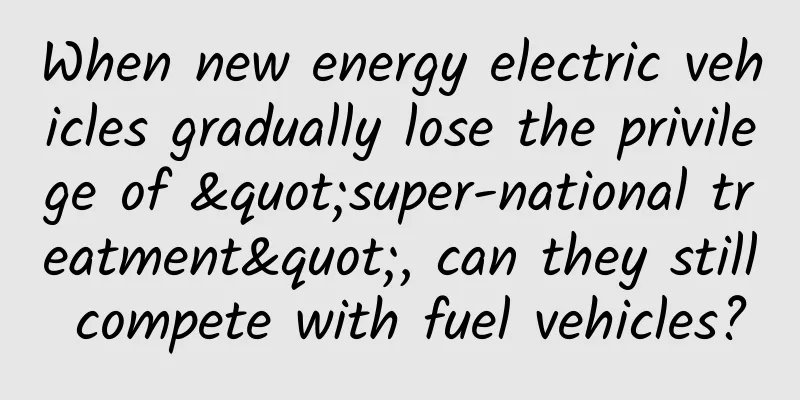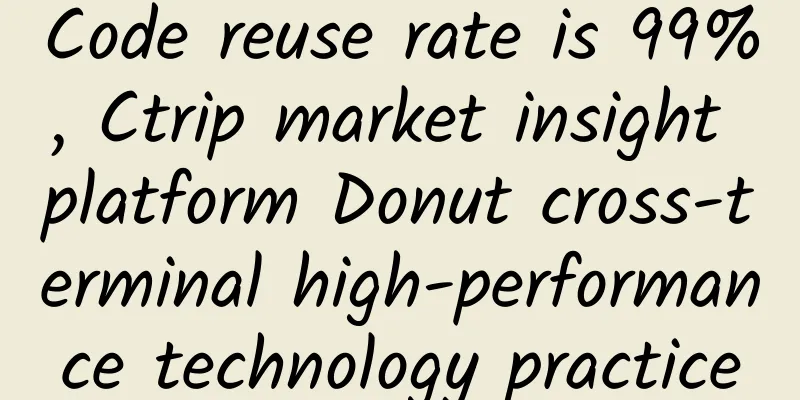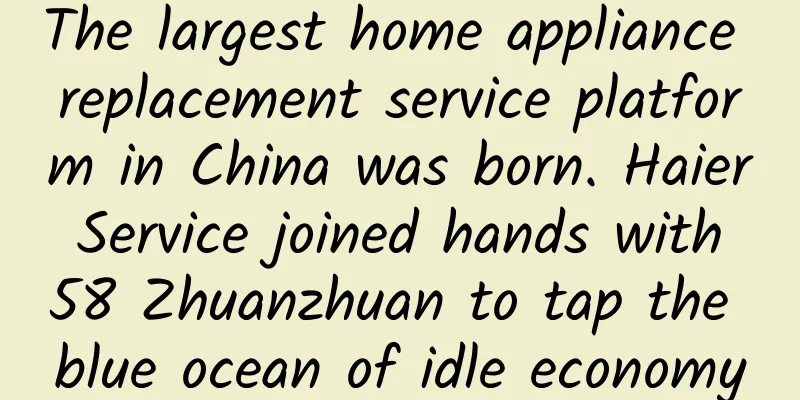When new energy electric vehicles gradually lose the privilege of "super-national treatment", can they still compete with fuel vehicles?

|
The topic of "electric and gasoline vehicles" is becoming more and more popular. Whether it is the policies of individual regions or the speeches of relevant leaders, they all seem to point to one thing: electric vehicles will be treated equally with gasoline vehicles. On November 12, Guo Shougang, deputy director of the First Department of Equipment Industry of the Ministry of Industry and Information Technology, mentioned that in order to adhere to a steady transformation, we must vigorously develop new energy vehicles while promoting the development of internal combustion engine technology, stimulate the vitality of the development of traditional energy vehicles and internal combustion engine industries, and achieve high-level transformation and upgrading. In short, it can be said in one sentence: we cannot give up fuel vehicles. And soon after this was said, a short article about Hainan's road maintenance fee was circulated on the Internet. Although the Hainan Provincial Department of Transportation responded that it was fake, do not believe it and do not spread it, the fact that the online content was actively reposted by netizens also shows that gasoline users hope to achieve "gasoline and electric parity" as soon as possible, just as some netizens said: Shouldn't new energy vehicles pay road maintenance fees? Their cars are so heavy, how can they run on the road without loss? Behind the calls for equal rights is the fact that new energy vehicles have enjoyed too many "super-national privileges" in recent years. As early as the beginning of 2010, the government launched a new energy vehicle subsidy policy. The goal at the time was to accelerate the promotion and application of new energy vehicles through financial support, cultivate market demand, and help energy conservation, emission reduction and industrial upgrading. In 2015, the notice on "Several Measures to Accelerate the Development of the Electric Vehicle Industry" was issued, which clearly stated the goal of achieving at least five electric vehicles per thousand people by 2020. In order to make people more interested in new energy vehicles, local governments have been adding fuel to the fire in terms of policies. The state has given certain tax preferential policies to automobile companies. Companies with large R&D investments can also enjoy preferential tax rates for R&D expense deductions. If it is a small batch of vehicles exported to overseas markets, a certain proportion of small-scale tax exemption can be obtained. For enterprises that have outstanding performance in product design innovation and technological improvement, they will be selected as "high-tech enterprises" and enjoy a series of corresponding benefits such as reduced income tax ratio. To encourage purchases, local governments have also launched car purchase subsidy programs. For example, when purchasing a pure electric or plug-in hybrid vehicle, a certain amount of handling fee subsidy or direct cash subsidy can be obtained. Policies such as substantial subsidies, free green license plates, exemption from purchase tax, and no impact from traffic restrictions have created a good development environment for new energy vehicles. In 2022, China's new energy vehicle sales accounted for nearly 60% of global new energy vehicle sales, making it the world's largest market. In the past two years, the penetration rate of new energy vehicles has also been increasing. Recently, the China Passenger Car Association issued a document stating that based on the corresponding prediction of domestic retail sales, the penetration rate of new energy vehicles should continue to exceed 50% in November. The increasingly high penetration rate has made new energy vehicles gradually transform from a "vulnerable group" to a "market leader", and the sequelae of previous "privileges" have begun to appear. The “super-national treatment” of new energy vehicles in the past has led to a very unfair competitive environment between fuel vehicles and new energy vehicles, and new energy vehicles are also engaging in “internal competition” by lowering prices. It seems that they are working in full swing, but in reality, the volume of business has increased but the profits have not. Many car companies are even still making money from fuel vehicles to support their own new energy businesses. Just last month, Wang Jun, president of Changan Automobile, publicly stated at the Wuzhen Auto Forum that China's auto industry transformation has entered a period of non-steady-state competition, with "involutionary" competition on the rise, and the challenge of weakening healthy competition at home and abroad. He pointed out that there are 98 new energy vehicles on the market in China, but only 10 of them have monthly sales of more than 10,000; only 3 of China's 71 passenger car brands are profitable, and it is expected that more than 80% of Chinese brands will face closure, suspension, merger and transfer in the future. In terms of profits, the overall performance of new energy is not very good. From January to October this year, my country's automobile industry revenue was 833.2 billion yuan, a year-on-year increase of 2%, but the profit margin fell by 3.2% year-on-year. It can be seen that behind the high penetration rate of new energy, there is actually not that much optimism. This can also show from another level that blindly suppressing the development of fuel vehicles is not a good thing, and the government still needs to reconsider the overall situation. To be fair, the high market penetration rate of new energy vehicles is not the result of fair competition with fuel vehicles or the market's independent choice. It is more driven by policies, which have caused many car companies to deviate from the real needs of the market and use less mature products and technologies to compete wildly in the market. The decreasing number of fuel vehicle options has forced consumers to consider new energy vehicles. Someone on Zhihu has compiled a statistic that in 2018, a total of 48 pure electric vehicles and 11 plug-in hybrid vehicles were launched on the market, and the two combined were still less than the 72 gasoline vehicles. However, by 2023, there will be only 27 new products in the entire gasoline vehicle market, while there will be 61 pure electric vehicles and 43 plug-in hybrid vehicles, the latter two being nearly four times the former. What is more noteworthy is that even in such an unfair competitive environment, consumers still account for the majority. According to the data from the China Passenger Car Association, in the sales structure of new energy vehicles in October, pure electric vehicles accounted for 57%, narrow plug-in hybrid vehicles accounted for 34%, and extended-range vehicles accounted for 9%. In the same period last year, pure electric vehicles accounted for 66%, narrow plug-in hybrid vehicles accounted for 24%, and extended-range vehicles accounted for 9%. It can be seen that the turning point for electric vehicles to overthrow gasoline vehicles has not yet arrived. At least for now, in the minds of consumers, it is not yet comparable to fuel vehicles. In addition, it is now a general trend for Chinese auto brands to "go overseas", and in the global market, fuel vehicles still have an unparalleled position that electric vehicles cannot match. If you want to establish a brand overseas, pure electric vehicles alone are obviously not enough. In October this year, 414,000 fuel vehicles were exported, a year-on-year increase of 13.6%; 24,000 plug-in hybrid vehicles were exported, a year-on-year increase of 1.6 times. Various current situations such as user decisions, sales of fuel vehicles, and the development conditions of various companies indicate that "fuel-electric parity" may be more conducive to the sustainable development of automobile companies. In this regard, Cui Dongshu, secretary general of the China Passenger Car Association, has repeatedly proposed the idea of "equal rights for oil and electric vehicles", believing that this not only reflects fairness to fuel vehicle users, but is also conducive to the overall stability of the automobile market. In fact, the country has indeed been gradually reducing subsidies in the past two years to release market forces. Today, although "equal rights for oil and electricity" has not yet been fully realized, the two sides will compete to determine the winner. After oil vehicles give in three moves, there will always be fair competition. When the "super-national treatment privileges" of new energy vehicles ebb, the competition between oil and electricity will truly begin. At that time, without policy favoritism, who will be the ultimate winner? |
<<: MediaTek painstakingly builds Helio X30: completely defeated by Snapdragon 835
>>: PC profiteers are very cunning! Uncover the secrets of Taobao's 8GHz computers
Recommend
After giving birth, the uterus prolapsed and fell onto the thigh. This is not a horror movie, but a documentary of countless women.
A 32-year-old mother of two in Zhengzhou, Henan P...
Is the popular “private domain traffic” really that powerful?
Private domain traffic should be one of the hotte...
Magnesite: This is a stone that can be used to weave cloth?
Brucite is named in honor of Archibald Bruce (177...
Market trends and placement techniques for franchise advertising!
In recent years, the main battlefield of advertis...
12306 applies for a patent to prevent automatic ticket grabbing. Is the ticket grabbing software still useful?
Today is the first day of the Spring Festival tra...
Could a child really be trapped in a refrigerator? Can't the door be opened from the inside?
As a person from Northeast China, I know by heart...
12 modes of short video monetization
This article summarizes some short video monetiza...
PS4 Chinese version of "Tearaway: Unpacking": Creative and rich handle features show new fun
At the end of this year when many console blockbu...
Microsoft is considering porting UWP apps to Java: Android can also use it
[[278295]] During the long holiday, Microsoft rel...
"Hand in hand" in outer space? A review of the "highlights" of China's international space cooperation
After decades of efforts, China's space indus...
Precautions for fresh Cordyceps sinensis
May and June every year are the fresh Cordyceps s...
Two marketing warnings during the epidemic
After the outbreak of the new coronavirus pneumon...
Wear a mask! Wear a mask! Important reminder
Recently, the epidemic prevention and control gro...
Yinlong launches panda-shaped bus, factory gate blocked, Yinlong says it will not change technology route, only short-term adjustment
Zhuhai Yinlong recently launched a panda-shaped b...
Apple's contract manufacturers are exposed for multiple violations: long working hours and low wages
The Fair Labor Association (FLA), a non-profit wa...









